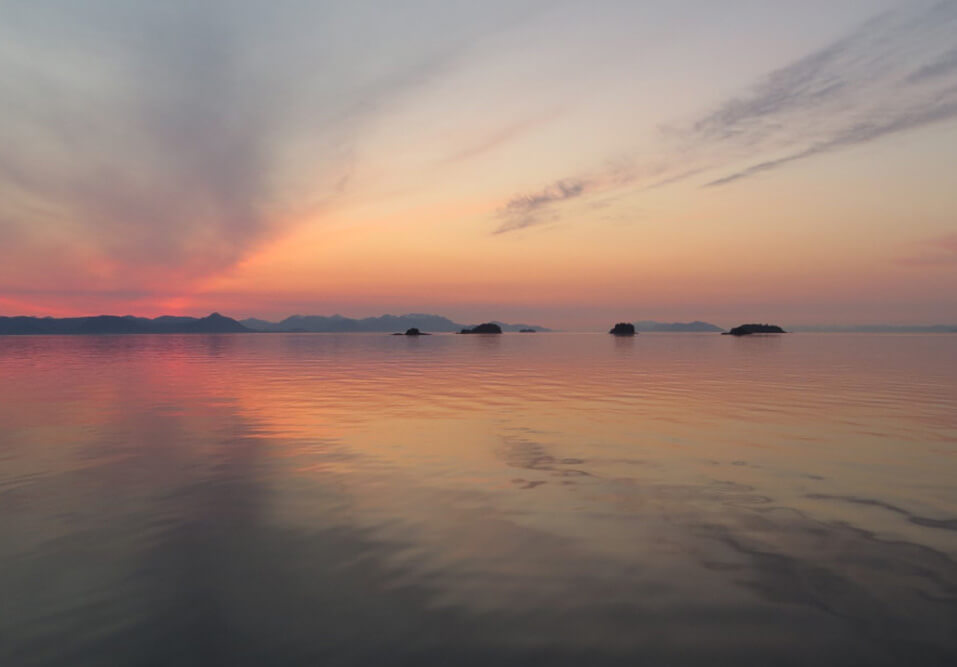
Alaskan Journeys
As I greet newly arriving guests ready for an Alaskan adventure aboard the Admiralty Dream, I’m reminded of the saying: “Every great journey begins with that first step.” But in Alaska that “first step” may just begin with a flap of a wing, the flick of a tail, the falling of a water droplet or, as is the case with our guests, the walk up the gangway. For, as one looks around, journeys are at the heart and soul of every Alaskan experience.
Consider the daily and seasonal journeys made by the myriad of wildlife that call Alaska home. Many year-round residents of the four-footed kind must migrate from place to place in search of better feeding grounds. Both black and coastal brown bears, for instance, make the daily trek to the shoreline as the tide goes out in hopes of finding blue mussels, clams, barnacles and the occasional stranded fish to devour. Sitka black-tailed deer must constantly seek out the lush new growth of forest clearings. Mountain goats, seen at lower elevations in early summer, make their way higher up the mountain side as summer warmth increases. And don’t forget the grey wolf, fearful and elusive, constantly on the move to satisfy an insatiable appetite.
Alaska is also the summer home of a variety of birds that make long journeys northward just to feed and raise their young here. Most notable are the many waterfowl including ducks, geese and swans migrating up from the Lower 48. Bald eagles leave their summer nests to winter near the warm springs of the Chilkat River near Haines. Even the tiny rufous hummingbird will follow the “flower trail” all the way from Mexico to feed on the sweet nectar of our wild flowers. And then there’s the greatest “frequent flyer” of all – the Arctic tern. Traveling an unimaginable 11,000 miles, they follow the increasing sunlight northward from Antarctica to spend the summer in Alaska before turning around and heading all the way back.
Alaska is home to and heavily relies on our great resource of Pacific salmon. Five different species can be found in our coastal waters. If one is lucky enough to visit during a salmon run, they’ll witness the timeless journey of these creatures miraculously finding their way up their natal stream to the place of their birth. The few survivors of this harrowing journey then spawn and, sadly, die furnishing food for hundreds of animal species and fish fertilizer for the surrounding forest.
Certainly, one can’t forget the 4,000 mile journey of our largest summer visitor, the humpback whale. Spending summers in the plankton-rich waters of Alaska, they feed over 20 hours a day to pack on the blubber which will sustain them throughout their winters of mating and birthing in the tropical waters off Hawaii.
All this would not be possible if it weren’t for the timeless and cyclical journey of the life-sustaining raindrop. As part of the over 100 inches of rain falling annually in areas of Southeast Alaska, this single drop has helped create the largest temperate rainforest in the world which, in turn, led to the designation of the Tongass National Forest, the largest National Forest in the United States. And if this raindrop happens to fall in the colder, higher elevations of the Coastal Range, it could very well become a delicate snowflake helping to form the beautiful blue ice of a massive glacier. Flowing ever downward, year after year, it helps carve out the valleys and fjords that create the mosaic landscape of the Inside Passage. But our little snowflake’s journey is far from over. For once the glacier reaches the seawater’s edge, great chunks calve off to become floating icebergs, which eventually melt and begin the cycle all over again.
So you see, it’s these journeys and many more that make Alaska the special, awe-inspiring place it is. And for the guests who make their way up the gangway on to the Admiralty Dream, these journeys are just waiting to be discovered. All it takes is that first step.
By Expedition Leader David Miller
Back to All Articles
